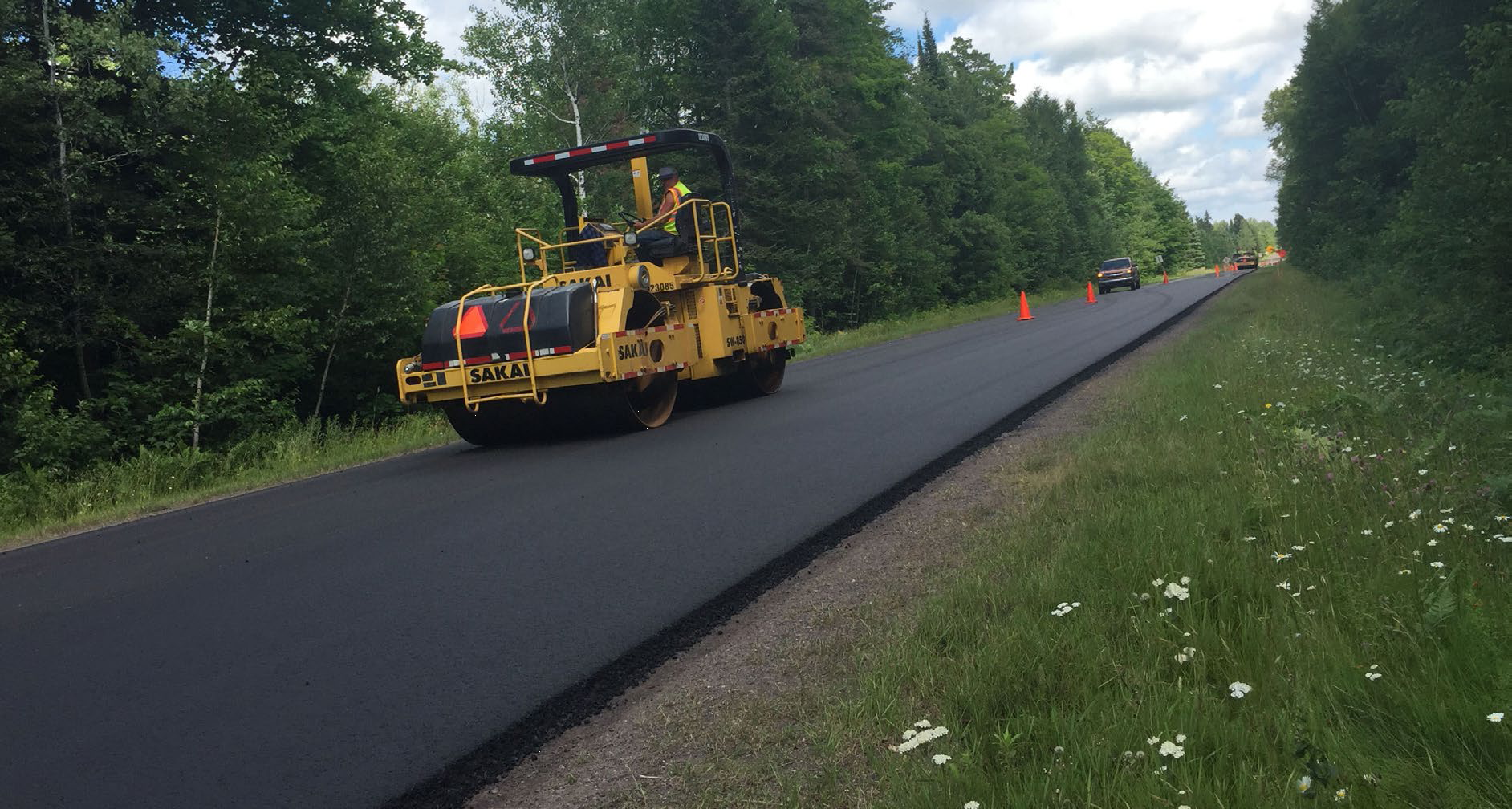The Bridge, Winter 2015-2016
Cassandra Matchinski, Technical Writer

Imagine a pavement that offers a quieter ride, lasts longer than conventional asphalt pavement, and makes use of a consumer waste product. Not only would this pavement be easier and less expensive to maintain, it would benefit the environment and incorporate used tires – a resource that currently has very few uses. Crumb rubber asphalt made with recycled tires may be that pavement, and a research project in Michigan may determine whether crumb rubber roads will be sustainable in northern Michigan.
The use of crumb rubber in asphalt can be traced back to the 1840s, but its debut as a successful surface treatment came in the 1960s. To make crumb rubber asphalt, tires are processed to remove the steel and fiber from the treads, and the rubber is either ground or fractured to make it small enough to blend into the asphalt binder. Cryogenic fracturing the tire pieces results in smooth particles with a relatively small surface area, while grinding at ambient temperatures results in particles which are rough in texture and have a larger surface area. The resulting particles will vary in size, with 4 to 5 mm being the largest.
Once the rubber has been processed, there are three general options for creating binders and mixtures, which will result in pavements with very different properties. The dry process replaces between 1 and 3% of the aggregate with crumb rubber. Because the crumb rubber acts more as an aggregate than an asphalt cement, it is the least used method of the three. The wet on-site process blends the crumb rubber in a mixing tank on site and allows it to react with the asphalt binder for a set period of time, which results in the rubber particles being “digested” by the binder. Wet on-site process asphalt is typically used in gap- or open-graded mixes and chip-seal applications. Terminal blend is also a wet process that produces a binder of crumb rubber blended with hot asphalt. The mixing process occurs at the asphalt terminal or refinery and does not require special facilities. Terminal blends are notable for long storage life with proper agitation. They can be used in all pavement applications, but are best for dense-graded mixes. Terminal blends can also be used in chip seal, slurry seal, and tack coat applications.
Benefits of Crumb Rubber Asphalt
Crumb rubber has been successfully used in surface treatments in Texas, Florida, Arizona, and California for more than 30 years. According to the California Department of Transportation, crumb rubber asphalt boasts lower maintenance costs because of its improved durability and performance. The higher binder content and elasticity are the source of that durability, along with greater resistance to cracking and less susceptibility to temperature fluctuations. In addition to a longer life span, reduced traffic noise (from 40 – 88% reduction) has also been documented in California, Arizona, and several European countries. Because crumb rubber is made from recycled tires that would otherwise be discarded or burned, there are also environmental benefits. Up to 11 million tires are discarded each year in Michigan alone; tires that pile up at scrap tire sites are eventually processed and burned, which still leaves the incinerator ash to dispose of. Without careful monitoring of tire waste, there is potential for massive fires like the one that burned for 23 days in the Traverse City area in 1995. Using those scrap tires instead as a performance-improving material in asphalt eliminates waste, reduces the risk of tire fires, and is ultimately a beneficial process.





